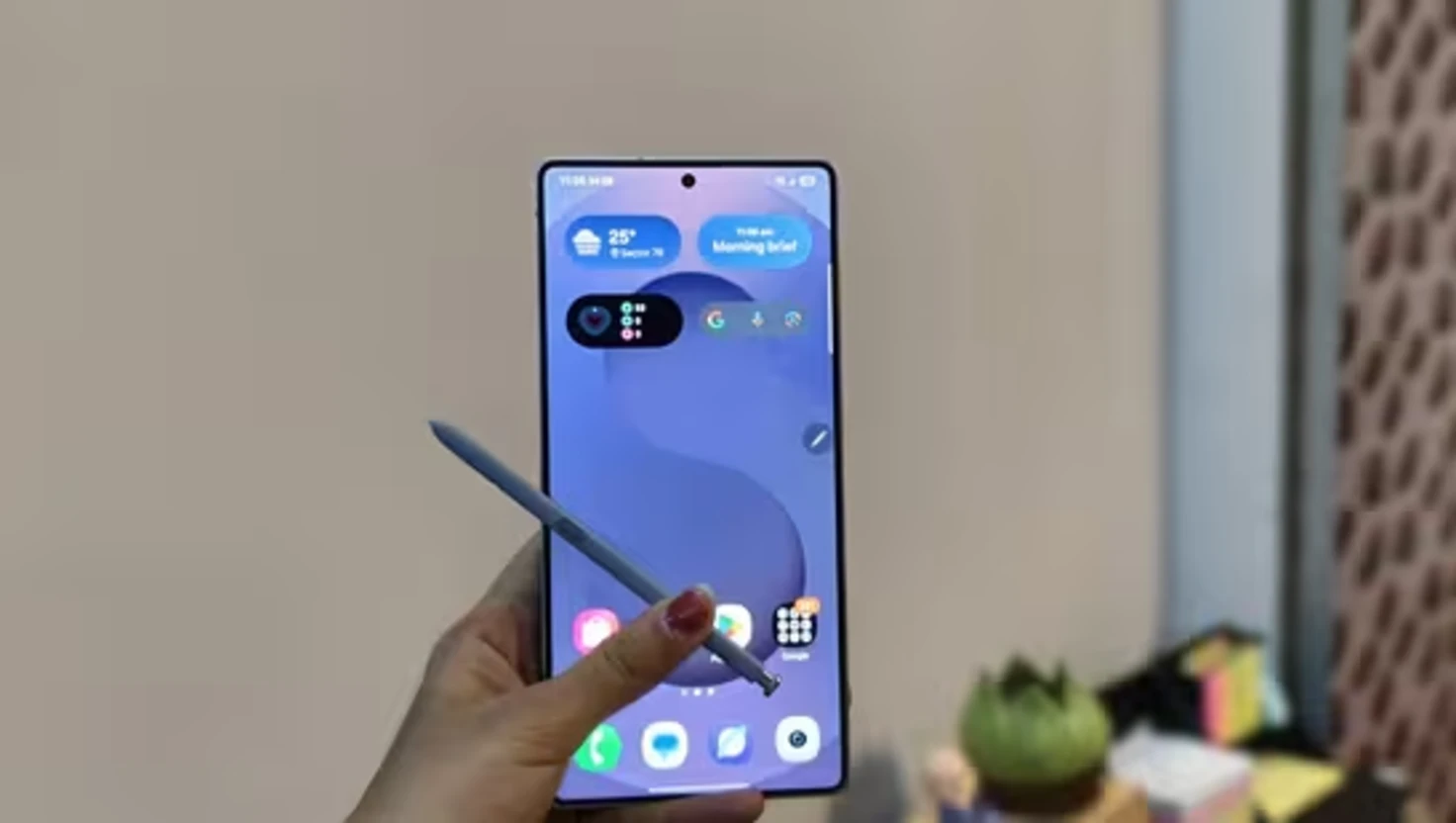Samsung Galaxy S26 Ultra to Feature Innovative Display Technology

Samsung Galaxy S26 Ultra to Feature Innovative Display Technology
Samsung's upcoming Galaxy S26 Ultra may revolutionise display tech with CoE OLED, enhancing brightness and battery efficiency.
Samsung Electronics is reportedly working on a major upgrade for its forthcoming Galaxy S26 Ultra smartphone, aimed at significantly improving display technology. Early indications suggest that the new model will employ a next-generation display technology known as Colour-on-Emitter OLED (CoE OLED). As the company finalises its current range of flagship devices, attention is turning towards potential enhancements that could reshape the standard for smartphone screens.
Understanding CoE OLED Technology
The CoE OLED technology integrates colour filters directly onto the light-emitting layer of the display, as noted in a recent article by Android Headlines. Traditional OLED screens typically feature separate layers for colour filters and light emitters, which can limit light transmission and diminish overall display quality.
By merging these layers, CoE OLED promises to enhance light extraction efficiency. This innovation could allow the display to produce brighter images without consuming additional power. For users, a brighter screen can improve visibility in direct sunlight and enhance battery longevity, an essential factor for many smartphone users.
Potential to Transform Viewing Experience
In addition to brightness and power efficiency, CoE OLED is expected to broaden the spectrum of colours the display can reproduce. The proximity of colour filters to the light source allows for more vibrant and accurate colour representation. Consequently, the Galaxy S26 Ultra may deliver a more lifelike and immersive experience for various multimedia content.
Furthermore, reports from prominent tipster Ice Universe suggest that Samsung may incorporate a “depolarizer” in the Galaxy S26 Ultra’s display. This component aims to minimise internal reflections on the screen, thereby enhancing contrast and sharpness, which could result in crisper images.
Should Samsung successfully implement both CoE OLED and depolarization technology, users can anticipate a display featuring not only brighter visuals but also deeper colours and improved energy efficiency. Such advancements could solidify Samsung's position in the premium smartphone market, especially in a competitive landscape dominated by devices such as Apple's iPhone 17 Pro Max.
As anticipation builds for the Galaxy S26 Ultra, expected to launch several months from now, the spotlight will be on how effectively Samsung integrates these advanced display technologies. More detailed specifications and features are likely to emerge as the release date approaches, offering further insight into what consumers can expect from this flagship device.
The development of the Galaxy S26 Ultra continues to garner attention from technology enthusiasts and industry watchers alike, eager to see how Samsung will respond to ever-growing consumer expectations for display quality and performance.
In summary, the Galaxy S26 Ultra may set new benchmarks in smartphone display technology with its potential adoption of CoE OLED and related innovations, redefining the viewing experience in mobile devices for users worldwide.

iPhone 17 Series Set for Significant Dynamic Island Upgrade
Anticipation builds for the iPhone 17 series, featuring an enhanced Dynamic Island in September 2025, promising a more integrated user experience.
| 2025-07-16

Comparative Analysis of Vivo X Fold 5 and Samsung Z Fold 7 Devices
A detailed comparison of specifications, features, and pricing for the Vivo X Fold 5 and Samsung Z Fold 7 foldable smartphones.
| 2025-07-16

“When precision meets passion and technology meets tenacity”: PM Modi congratulates Crew-9 astronauts on return to Earth
PM Modi describes NASA astronaut Sunita Williams as a trailblazer and an icon
| 2025-03-19

‘Eliminate bias, develop open source systems that enhance trust and transparency’: PM Modi at AI Action Summit in Paris
The loss of jobs is AI’s most feared disruption, says PM Modi
| 2025-02-11

How ISRO's NVS-02 satellite will improve indigenous navigation capabilities through NavIC system
NavIC, or the Navigation with Indian Constellation system, is particularly significant for applications such as navigation, agriculture, disaster management, fleet tracking and more
| 2025-01-27




